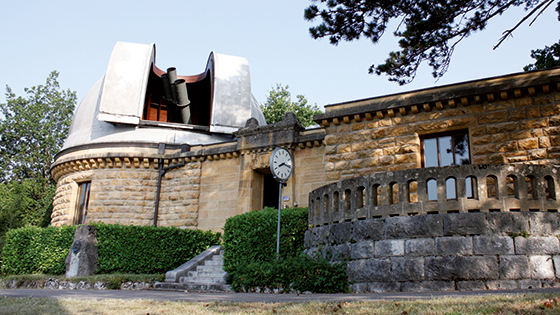
The Automates & Merveilles Association has announced the launch of a new project, “From stars to atoms... The Cantonal Observatory of Neuchâtel”. Opening on 20 June 2026 and due to run until the end of the year, this third major project reaffirms the mission of the Automates & Merveilles Association: namely to showcase the technical and watchmaking heritage of the canton of Neuchâtel and the Jura region.
Building on its previous successes – “Automates & Merveilles” (2012), a tribute to the watchmakers and mechanical engineers of the 18th and 19th centuries, and “Rêves en trois temps” (2018), dedicated to the restoration and display of three exceptional pieces from the collection – this new exhibition promises to captivate, inspire and thrill all passionate or curious individuals eager to rediscover a scientific institution’s role in watch industry development. This project will notably be based on the latest research conducted by the Institute of History and the Laboratoire Temps-Frequence at the University of Neuchâtel, as well as the Haute-Ecole Arc conservation-restoration department. The programme will be presented in detail on 20 June at the historic site of the Cantonal Observatory, 365 days before the official opening.
Founded in 1858 by the Republic and Canton of Neuchâtel at the request of watchmakers seeking high precision, the Cantonal Observatory specialised in time measurement by certifying the quality of chrono-meters submitted and distributing the exact time via the telegraph network to watchmaking towns and the federal administration, thereby playing a central role in the coordination of time across Switzerland.
As part of the exhibition “From stars to atoms... the Cantonal Observatory of Neuchâtel”, several institutions are joining forces to offer a unique journey through the history of this scientific establishment, which has brought renown to the canton of Neuchâtel and the Jura region. The International Watch Museum in La Chaux-de-Fonds explores the evolution of time measurement and the international standardisation of time, showcasing the Observatory’s scientific instruments. The Watch Museum of Le Locle, located in the Château des Monts, traces the interaction between the Observatory and the precision watchmaking industry, revealing the role of certification and chronometry competitions in the excellence of the Jura region.
The Neuchâtel Museum of Art and History presents the adventure of time measurement from the observation of the stars to the exploitation of the atom, using innovative immersive devices that allow visitors to discover the Observatory site and the historic meridian circle room. Finally, the historic site of the Cantonal Observatory of Neuchâtel on the Mail hill will be enhanced by an exhibition, an educational trail and the restoration of the Hirsch Pavilion in partnership with the EspaceTemps Museum, the Office for Built and Intangible Heritage and the Buildings Department. These exhibitions will also benefit from the input and expertise of the Laboratory of Experimental Museology at the Swiss Federal Institute of Technology in Lausanne (EPFL).
In addition to these exhibitions, a reference book, a Passion Cinéma film series, lectures and workshops will enable visitors to explore the theme in greater depth. Finally, an international conference organised by the Scientific Instrument Commission – an organisation dedicated to the history and preservation of scientific heritage – will give specialists from around the world an opportunity to discover this exceptional heritage.
May 15, 2025


 News
News